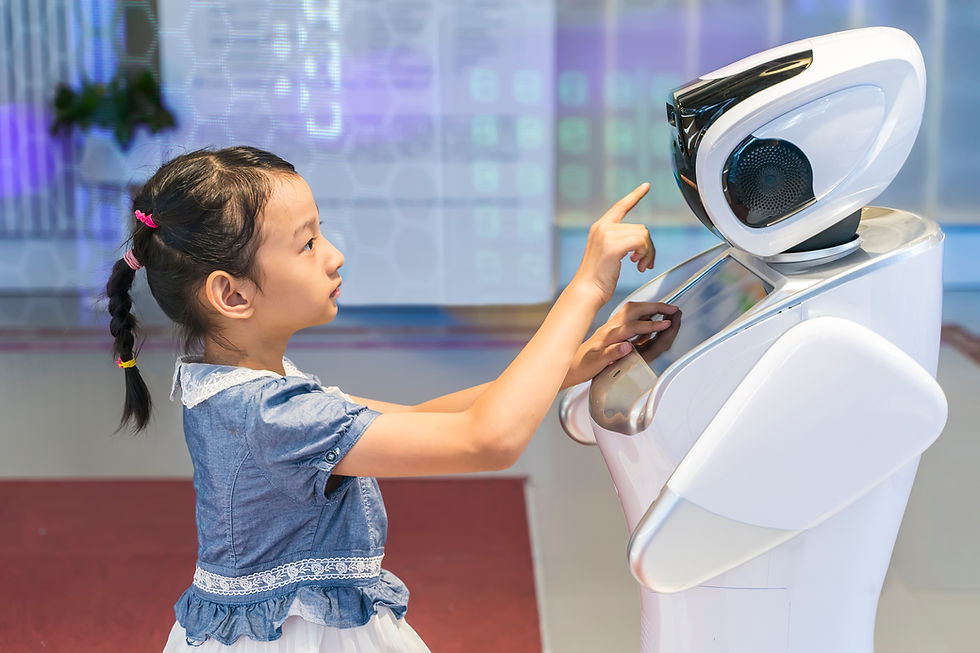Evolution of the Virtual Classroom
- Andrew Wright
- Nov 12, 2021
- 3 min read
Updated: Nov 17, 2021
Hybrid classrooms, blending the real and the virtual in a post-Covid world.
During the NSW Covid lockdowns, the schools I coach were closed. Our students entered into a daily routine of zoom calls and isolation. A routine that would continue for over 3 months. Unable to get to schools, I searched for an alternative to bring us together in one space. An online world that allowed students and teachers a chance to reconnect. As well as reconnecting, to have a presence in that space.
That’s when the concept of creating an EDUmetaverse of Virtual Worlds began. Schools needed an application that allowed access through a domain, was password protected and ultimately protected the student's identity through simple avatars. That’s when I found FrameVR. Accessible through a browser, without the need for a headset, opening up a world of accessibility for all schools. Worlds could become story prompts, sustainability centres, earth experiences and limitless teaching platforms. All designed to engage and excite. We wanted to take students from the surface of mars to the amazon rainforest. From the deck of a First Fleet sailing ship to a Research Station on Antarctica. The possibilities suddenly became endless. Limited only by my imagination and theirs!

Once the concept was in place the process of creating could begin. I taught myself the basics of Blender through an online course, from which I’ll probably never recover. I bugged everyone in the community when I came across a hurdle, and there were many. Eventually, I had enough understanding to start creating basic worlds. They say you can't teach an old dog new tricks, but they can teach themselves.
The foundation for the EDUmetaverse was to take lessons I’d previously done that worked well and build worlds around them. For instance, the RMS Titanic world is from a Literacy lesson on report writing. Now though, we can bring entire classes onto the deck of the Titanic and collaborate on projects in real-time using data sets and visual imagery. Many of the schools here in NSW use Google classroom. Being able to embed that into worlds creates incredible workflows that facilitate smooth transitions from the real class to the virtual one.
For example, in the Mars Mission Field Trip, there’s an old computer on one of the desks. Students are required to collaborate to find multiple solutions to problems with living on Mars. Either working in the real classroom or returning to the virtual one, they can enter their data through hyperlinks to their teacher as Google docs and forms.
Three months in and students are still moving in and out of worlds to enhance their classroom learning. The feedback from them is incredibly positive. My favourite quote from a student during this time was “At the moment we can’t go anywhere, but in here we can go everywhere!“.
Now out of lockdown and returning to classes, the worlds have begun to get more intricate. I’m now up to 20+ worlds and I’m still building. Now the focus shifts to adding the EDU content. It’s clear to see that this is just the beginning. Hybrid learning platforms in a post-Covid world, allow us to augment our physical classrooms with online ones. How many times as teachers have I heard a parent ask “Will there be work for my child while we are on holiday?”. The answer is yes. Metaverse worlds allow learning to take place anywhere at any time from any place on earth. The possibilities are endless! Ultimately I aim to create Virtual Field Trips and online learning experiences for a global audience. Bringing teachers, students and experts together. It would be great to bring you along.
For examples of all the Virtual Worlds I’m creating and a chance to visit and experience them.. you can visit www.EDUmetaverse.com.au.
When you’re ready. I’m here to help you with yours. info@iteacher.net.au
"Create, Innovate and Inspire" Andrew Wright - iTeacher










Comments